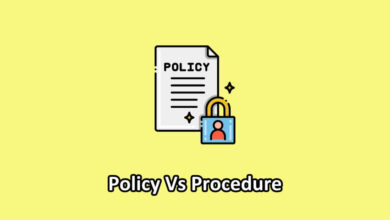Stocktaking Vs Stock Control : Side-by-side Comparison
For businesses that rely on inventory to operate, keeping track of stock is a critical component of success. The two most common methods used for inventory management are stocktaking and stock control. While these terms are sometimes used interchangeably, they refer to two different processes.
In this article, we will explore the differences between stocktaking and stock control, and the benefits each can provide to a business. So let’s first have a look at the following table comparing both stocktaking vs. stock control.
Stocktaking Vs. Stock Control (A Comparison)
| Stocktaking | Stock Control |
|---|---|
| Stocktaking refers to the physical counting and verification of inventory on hand. | Stock control refers to managing the flow of goods in and out of the business to ensure optimal inventory levels. |
| It is focused on accuracy and financial reporting. | It is focused on operational efficiency and customer satisfaction. |
| Stocktaking is less frequent, typically done annually or semi-annually. | It is an ongoing process and is done daily or weekly. |
| It is focused on a specific point in time and only covers the physical inventory. | It covers the entire inventory management process including forecasting, purchasing, re-ordering, and monitoring stock levels. |
| The main objective of stocktaking is to ensure the accuracy of inventory records. | The primary objective of stock control is to ensure effective inventory management to meet the demands of customers. |
| It usually requires a larger number of employees and can be a time-consuming process. | It can be done by a smaller team. |
| Stocktaking can be a costly process. | Regular stock control is usually less expensive due to its consistent nature. |
| It can be done manually. | It may use inventory management software to track and manage stock levels. |
What is Stocktaking?
Stocktaking, also known as physical inventory, is the process of counting and verifying the physical inventory on hand. This involves physically counting all items in stock, and comparing that count to the numbers recorded in the inventory system. Stocktaking can be done regularly, such as monthly or annually, or as needed in the case of inventory discrepancies or suspected theft.
Benefits of Stocktaking
- Accuracy: Stocktaking ensures that the inventory records in the system match the physical inventory on hand. This helps to prevent overstocking or understocking of items, which can lead to lost sales or wasted resources.
- Theft Prevention: Stocktaking also helps to prevent employee theft. When employees know that regular stocktakes are conducted, they are less likely to attempt to steal items from the inventory.
- Financial Reporting: Accurate stocktaking is essential for financial reporting purposes. This ensures that the inventory value reported in financial statements is accurate, which is important for tax purposes, audits, and other financial reporting requirements.
- Process Improvement: Regular stocktaking can help identify areas where inventory management processes can be improved. By analyzing discrepancies and identifying patterns, businesses can make changes to their inventory management practices to reduce waste and improve efficiency.
What is Stock Control?
Stock control, also known as inventory control, is a process used by businesses to manage the flow of goods in and out of the business. This involves setting minimum and maximum stock levels, tracking inventory movements, and ordering new stock as needed to maintain optimal inventory levels.
Effective stock control ensures that businesses have the right amount of inventory on hand to meet customer demand while minimizing the amount of money tied up in excess inventory. It also helps to reduce costs associated with inventory, such as storage costs, spoilage, and the risk of obsolescence.
Benefits of Stock Control
- Efficient Operations: Proper stock control ensures that businesses have the right amount of inventory on hand to meet customer demand. This reduces the risk of stockouts and lost sales, while also minimizing the amount of money tied up in excess inventory.
- Cost Reduction: Effective stock control can also help reduce costs associated with inventory. By minimizing excess inventory, businesses can reduce storage costs, spoilage, and the risk of obsolescence.
- Improved Customer Satisfaction: With proper stock control, businesses can ensure that they have the right products in stock to meet customer demand. This helps to improve customer satisfaction and loyalty, which can lead to increased sales and profitability.
- Enhanced Planning: By tracking inventory movements and analyzing data, businesses can make informed decisions about future inventory needs. This helps to optimize the ordering process and minimize the risk of overstocking or understocking.
Key Differences Between Stocktaking and Stock Control
The key difference between stocktaking and stock control is the focus of each process. Stocktaking is focused on verifying the physical inventory on hand and ensuring that inventory records in the system are accurate. Stock control, on the other hand, is focused on managing the flow of goods in and out of the business to ensure that the right amount of inventory is on hand to meet customer demand.
Another key difference between stocktaking and stock control is the frequency with which they are conducted. Stocktaking is typically done less frequently, such as annually or semi-annually, while stock control is an ongoing process that occurs daily or weekly.
Finally, while both stocktaking and stock control are integral facets of inventory management, they fulfill distinct roles. Stocktaking is primarily focused on accuracy and financial reporting, while stock control is focused on operational efficiency and customer satisfaction.
Conclusion
In conclusion, stocktaking and stock control are both important processes for businesses that rely on inventory management. While they share some similarities, such as the goal of ensuring accurate inventory records, they also have key differences in focus and frequency.
By understanding these differences and implementing both processes effectively, businesses can improve efficiency, reduce costs, and enhance customer satisfaction.
Whether you are a small retailer or a large distributor, effective inventory management is essential to success, and stocktaking and stock control are both critical components of that management process. So, make sure to implement both practices in your business and take advantage of the benefits they provide.



